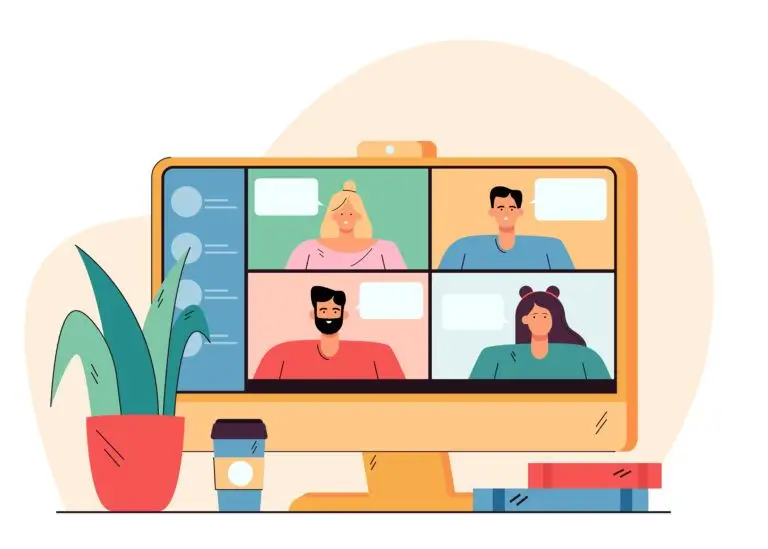We are living in a world where almost everyone owns a smartphone, laptop, or some other electronic device with all being connected to the internet. Instructors are now turning to these devices to help with digital education for students, even workplaces are using applications such as Zoom, Cloud Meetings, Skype, Discord and other communication devices. In traditional teaching, you have to attend classes for learning. Knowing that everyone regardless of their age has this technology in their hands; however, why should we not change the teaching methods? Not only we will talk about the advantages and disadvantages of this technology, in this article, but also intend to explain 10 ways digital education is transforming teaching methods.
Advantages and disadvantages of digital education
Digital education or learning by means of the internet may sound an easy and simple method for learning especially during lockdown due to Corona Virus. But like every technology, this method can also have some advantages and disadvantages that we have described as follows:
Advantages
1. The effective connection among students and teachers
Throughout traditional learning, the instructor spare little time or no time to answer the student’s questions. You have to e-mail the instructor or use instant messaging platforms to communicate with him/her and probably wait for the next session to get your answer.
However, this is different in digital education. These programs have provided you with an easy and simple way to communicate with your classmates and instantly, just like you always did with your close friends and family members.
2. Improvement in the language skill will be seen
Even though English or any other language may be your mother tongue or the one that you are taught with, it is interesting to know that mistakes can occur during writing, that you may not understand during speaking. Also, when you are taking notes in class, no one sees your writing therefore no one judges your mistakes.
It is different in digital education. You can send electronic messages to your classmates and teachers to connect with them. In addition, no hand gestures or facial cues will be detected to get your point across. Therefore, you are forced to write correctly and follow grammatical rules without making vocabulary errors.
3. The conditions and progress of learners will be monitored
Not all the instructors are the same. Some care about their students and others don’t. I have seen teachers that show no interest about the student’s presence in class. If we make every instructor an ideal one, they don’t really take time to monitor the progress and conditions of every student they have.
However, we have seen a completely different result in digital education. In the online environment, the instructor will show much more caring than traditional education. Even, the involvement of family members had some impact.

Disadvantages
1. Lack of Interaction among individuals
Corona Virus has really affected our life’s especially students. Before this, the student used to attend classes and spend their time with friends after class. But since the lockdown, the lack of interaction between individuals has decreased considerably. In other words, students are experiencing social isolation. Lack of communication and the occurrence of social isolation can lead to mental and health issues such as anxiety, and negative thoughts. That is why the presence of families during online classes is highly recommended.
2. Theory instead of practice
Let’s be honest. Laziness does not exist only in students, instructors can also be lazy. Using digital education has made them less eager to spend their time largely on the creation of theoretical knowledge. In this method, practical skills are given very little attention. Why do you think teachers do that? Because an online learning environment is a much easier and simpler way to implement theoretical lectures and it requires less effort.
3. Less motivation can be seen during an online learning environment
Going to class is not the only motivation for escaping the chance of failure in a class. Sometimes, seeing a familiar face or friend in the class face-to-face, talking with some guy/girl and making a connection with him/her, and asking questions from your teacher and seeing them energetic at the earlier times of the day can be a good motivation for students. Some students even get more motivated by hearing that their counterparts are getting better scores than them.
As we have seen during the last couple of months, the motivation of students has been decreased considerably, even among smart students. Of course, this case is true for part of students since some students don’t need a class. They just think about their future and what it holds for them.

Digital education is transform teaching methods
In this part of the article, we will describe how digital education is transforming teaching methods. In the final chapter, we finish our article with a conclusion.
1. Classes are becoming smart
Every one of us has been a student at some point in our life’s, and we know normal and non-active classes can be frustrating, where the teacher is just giving lectures and expect the class to give him/her homework. Those days are gone (except for the homework part, you are getting homework even online). The use of digital devices such as projectors (instead of writing lots of pages and presenting them on whiteboard) in classes and even making slides fun can be a very helpful tool to change the students’ mood.
2. No more books or notebooks
Before the dawn of the internet or digital devices (in other words “traditional learning”), notebooks were used by students. These stationeries were sometimes expensive and not all students could buy them (hard truth about our cruel world).
However, the current technology of phones and tablets has changed the way teachers teach. Nowadays, we see PDFs of books are shared among the students using Kindle reading devices and different tabs. Although it is already happening everywhere, we believe that there will be no pen and paper in the near future and everything will be written and read using digital devices.
3. Remote classes or sessions are possible
Remote learning is not a new thing. Free online courses such as MOOCs are being held all around the world to provide quality education and teach valuable skills at cost-effective prices. This technology has been transferred to schools and workplaces. These remote sessions make it possible for all individuals (no matter sex, age, or race) to participate in courses without any issues, just by connecting to the internet using their laptops, PCs, or smartphones.
4. Students will enjoy diverse instructors
In a regular classroom, students may get tired of seeing the same teacher day after day, mainly due to this reason that only one instructor or two are teaching this specific lesson. However, it is different in digital education.
Teachers from different parts of the world (Asian, American or European instructors) with different levels of education (bachelor, masters) will be assigned for students to enjoy. Using this benefit, students can increase their knowledge by experiencing instructors’ unique cultures, and perspectives.
5. Teaching kids will be much faster
It is proven that children learning at a very young age is much more effective than at an older age. In this regard, parents have been using a mixture of book-based education and technology to teach their children. For example, there are some clips, pictures, and applications designed specifically to determine which child can easily learn how to spell before attending school. If everything goes well, it can turn into a fun game and create enjoyable moments for the parents.

6. Keeping students busy
Maintaining students’ interest during classes is not an easy task. They are easily distracted by something going on in their house such as kids fighting, mom calling everyone for lunch, etc. Smart or no smart, this can happen to every student, not all students are the same. They will always give excuses to explain their actions.
An instructor can prepare a list of interesting things to write about for the students before or during the class to keep them engaged. Rewards for their best writings or reports will be also helpful.
7. Students and teachers will be updated on modern topics
Students spend most of their time on digital devices.
Maybe there are innovations and technologies that are unknown to us, but can be helpful for both instructors and students. In addition, you can find the subject related texts that can help find a solution faster than the book. Using this technology, digital teaching aims to improve learning by providing helpful websites and resources.
8. Various Software
Various software makes it possible for students to use different applications for their online learning. For example, you can carry out your project with your classmate on Zoom while the teacher is broadcasting the lectures on Skype.
9. The ability to record the sessions
But using this technology, you can record the videos of the sessions so you can watch them over and over in case you missed something or didn’t understand a particular subject.

10. Social Changes
Digital devices are really changing our world and we can see its effect in all our aspects.
Digital devices have changed the way people now communicate. Before the age of digitalization, people used to gather in restaurants, family homes, friends meetup, family worships, and any other social gatherings. All the above have changed, even worship practices have changed.
Conclusion
No more whiteboards, boring text books or notebooks to write on. Kindle reading devices and different tabs have been replaced by books. Basically, every students’ stationaries have been replaced by digital devices.



